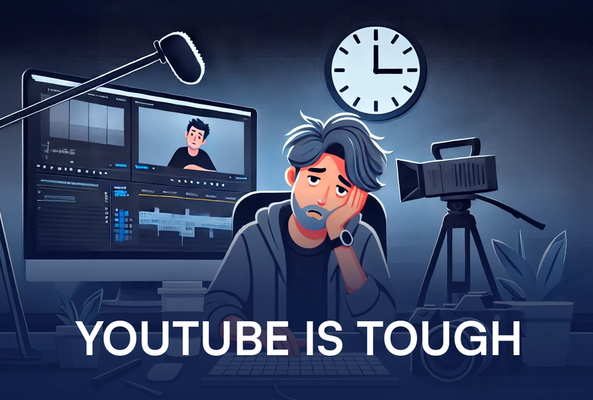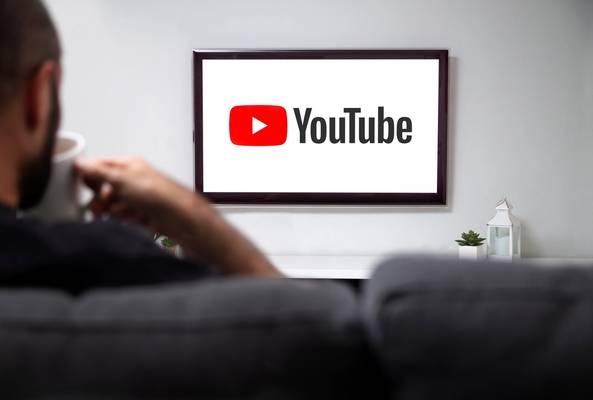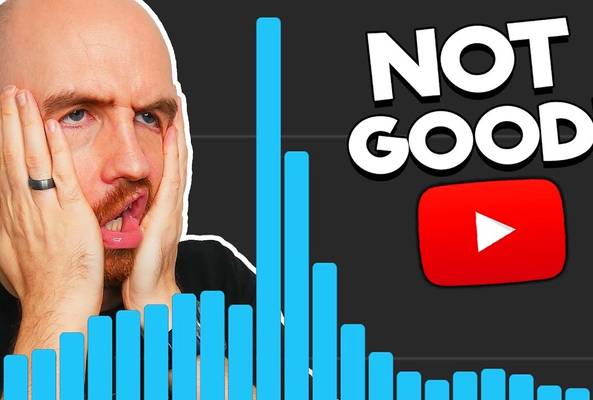Lydia Sweatt is a writer who loves balancing her article/blog time indoors with a healthy dose of nature. She bikes, hikes, and identifies edible plants along the way.
YouTube Skills: How to Become a Pro at Speaking on Camera
Unless you’re running a faceless YouTube channel, you’ll spend a lot of time learning how to get better on camera. This is particularly true for vloggers, makeup artists, fitness gurus, and other creators building a personal brand. For these YouTubers, their face and personality are more than just “another part of the video”; they’re tools for human connection.
So, what makes a good speaker on YouTube? A study by Quantified Communications analyzed over 100,000 presentations, rating public speakers on their clarity, confidence, persuasiveness, and warmth. We’ll start there as a basic foundation and then tie everything back to YouTube!
How to Speak in YouTube Videos
Of course, you will cringe at yourself in the beginning, but you're not alone, and it doesn’t mean you’re doing it wrong. Talking to a camera is much easier than giving a speech in person. Depending on your audience, you get to “relax” a bit and embrace the entertainment side of content creation. That means you can bring more passion, humor, and wit to your stories.
Stop Guessing. Start Growing.
Join 20M+ creators using vidIQ to get more views, subscribers, and success on YouTube.
Rather than mimic successful creators, focus on finding your unique voice. Warm-up recordings, speaking to the camera like it’s a friend, and ditching word-for-word scripts can all help you ease into a natural rhythm. As our creator Jenn mentions here, cringe is often just your true personality trying to come through. So, let it!
In this section, we’ll explain how to captivate viewers with your voice, facial expressions, and personality!
1. Practice the Art of ‘Vocal Variety’

Alternating your volume, how fast you speak, and the rhythm of your words is the best way to keep listeners engaged. Think back on all the speeches you’ve heard: Have you suffered through a boring presentation once or twice in your life? If so, we’re willing to bet one of two things happened. Either the speaker was completely monotone, or they communicated too fast or slow.
Matt Abrahams, a communications lecturer at Stanford, suggests that even a 10% increase in vocal variety can boost audience retention in listeners. For YouTubers, this means more watch time for your channel.
Here’s how to add vocal variety to your videos:
- Alternate your volume, finding that sweet spot between softness and loudness.
- Embrace a mix of fast and slow-paced speech to make your voice more dynamic and interesting.
- Switch up the cadence of your voice to create a "vocal melody." Decide which words to emphasize, where to create pauses, and where to experiment with volume changes.
2. Speak Clearly

YouTube is pretty relaxed, so it’s not the end of the world if you make a mistake or two when talking. At the same time, viewers need to understand what you’re saying. If your words are unclear, that can lead to misunderstandings, a loss of viewer interest, and worse of all, people leaving the video. This typically happens when the person is mumbling, speaking too softly, or using complex words no one understands.
Scripting your videos is the best way to deliver a clear and concise message every time. But you can become more persuasive by:
- Articulating your words fully
- Avoiding filler words, like “um” and “uh”
- Slowing down your speech when necessary
3. Maintain Eye Contact

It might seem weird to look directly into the camera when you’re speaking. After all, this is something we save for in-person communication, mostly because another person is giving us visual cues. A camera lens is not a human, so what’s the point of looking at it?
Well, imagine how viewers will experience your videos. If they can see you on camera, they’re going to look at your face. It’s a little disorienting (and impersonal) if you don’t return the favor by gazing back at them.
Have you heard of the 50/70 rule? It’s when you maintain eye contact 50% of the time while speaking and 70% of the time while listening. Of course, you’ll be speaking instead of listening, which means that 50% of the time, viewers need to see your eyes. This transfers a healthy dose of warmth and confidence to their side of the screen.
4. Be Passionate

Imagine a creator discussing their favorite hobby on YouTube. Their eyes light up, their speech becomes more animated, and their enthusiasm is palpable. The passion is borderline infectious and draws viewers in, so they keep watching the video.
On YouTube, “passion” looks like:
- Animated facial expressions
- Energetic body language
- Using storytelling to convey excitement
- Sharing personal anecdotes
These behaviors not only demonstrate warmth but give your videos a magnetic pull.
The Best YouTube Speakers Prioritize Watch Time
Want to improve your on-camera presence? The simplest solution is to focus on watch time.
- Determine how long you need to speak, then don’t use any extra words.
- Audit your speaking patterns (volume and speed) to create vocal variety and keep viewers engaged.
- Create warmth in your video by maintaining eye contact, changing your facial expressions, and using welcoming body language.
This is the art of using your voice and personality to carve out more watch time — second by second, minute by minute.
Speaking of watch time, these 10 videos attract plenty of it on YouTube!
FAQs
How do I overcome nervousness when talking to a camera?
Practice a little each day. Record short clips and watch them back. Stick to topics you enjoy. Over time, the nerves will fade.
Should I script everything I say on camera?
It helps to plan key points. Write down ideas and practice them. Leave space for a natural tone. This way, you sound friendly and real.
How can I sound more natural when speaking on YouTube?
Imagine you are chatting with a friend. Use everyday words and a relaxed tone. Practice until your speech feels easy and authentic.
Should I look directly at the camera lens when speaking?
Yes, make eye contact with the lens. This creates a strong bond with your viewers. Keep the camera at your eye level for the best effect.
How fast should I talk in YouTube videos?
Aim for a gentle pace of about 150-160 words per minute, but make sure you sound natural. Adjust the speed for energy or emphasis. Make sure your audience can follow every word.
What's the best way to practice speaking on camera?
Record 1-2 minute videos daily on any subject. Watch them back and note one thing to improve. Observe creators you admire for more tips.
20k+ 5 Star Reviews
Ready to put this into action?
Use vidIQ to find your next video idea, pick better keywords, and optimize every upload.






